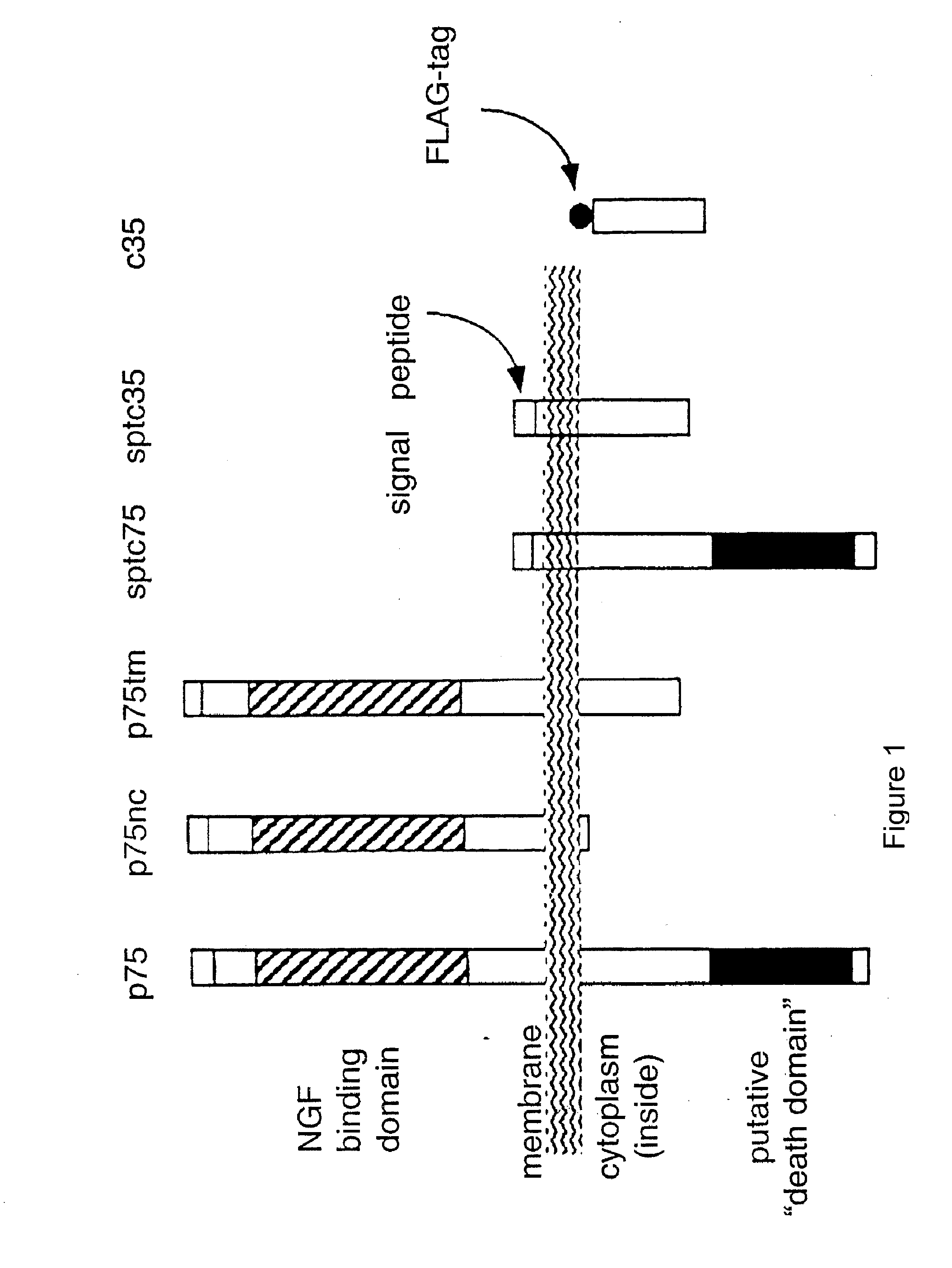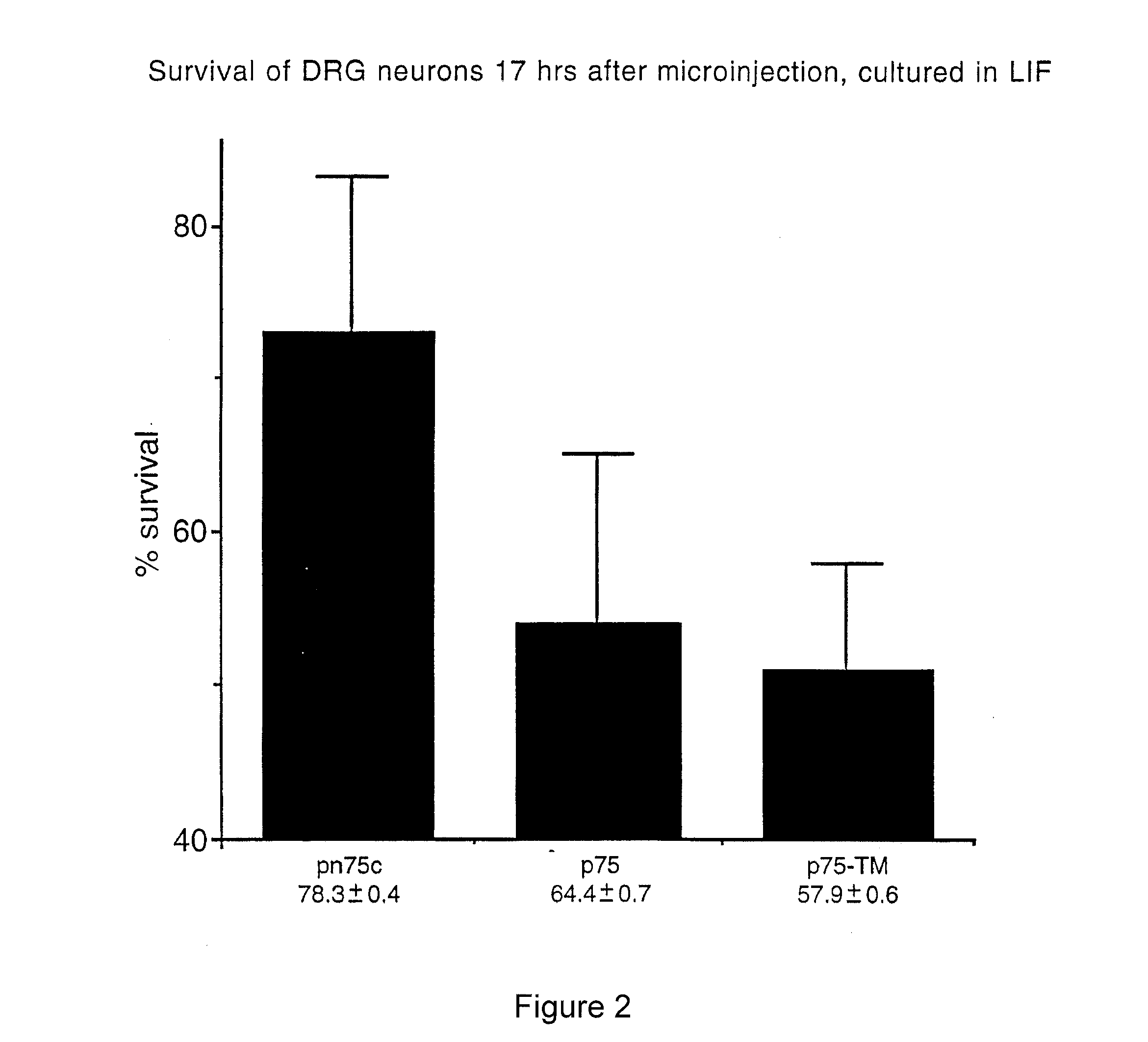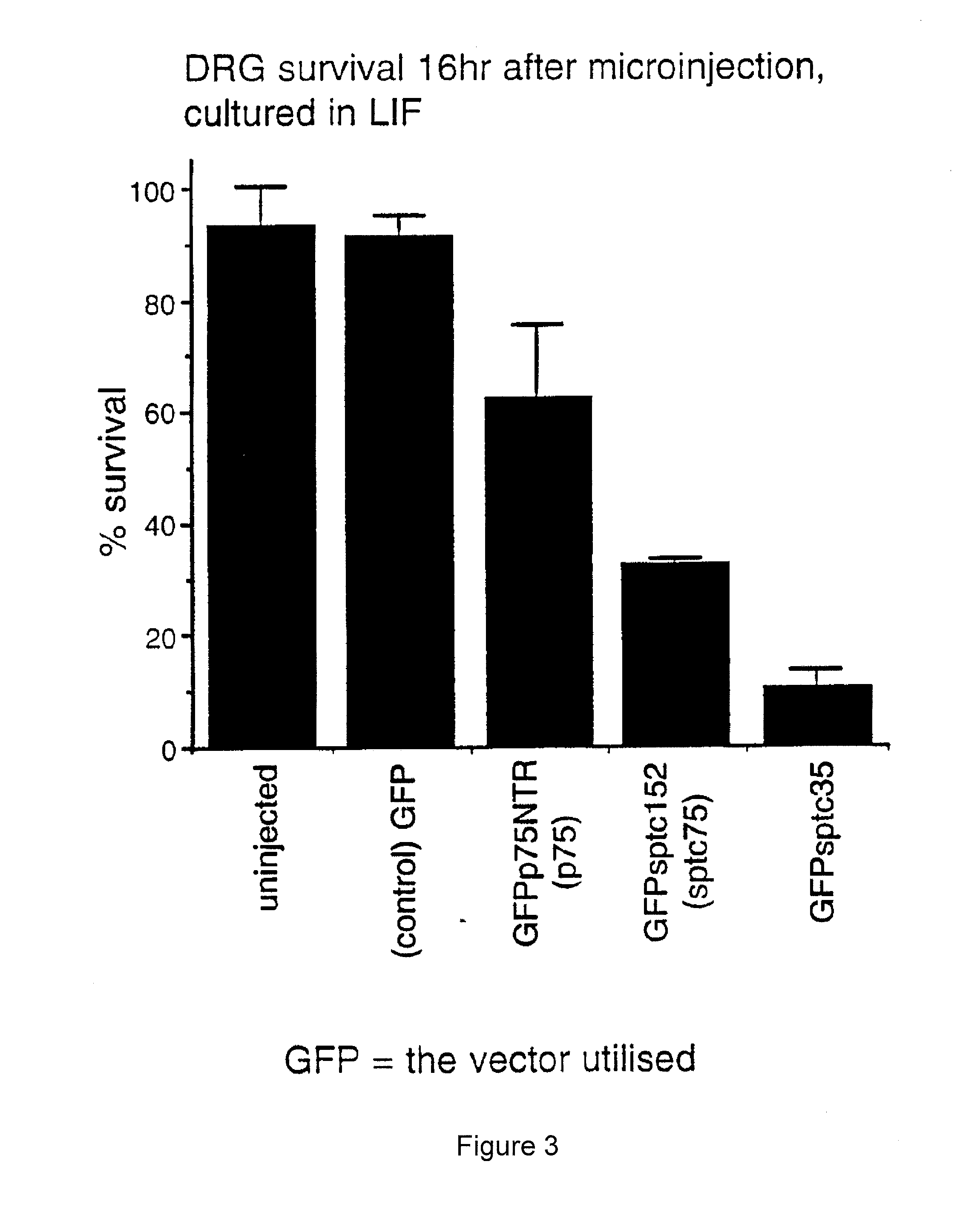Method of modulating cell survival and reagents useful for same
a cell survival and cell technology, applied in the field of cell survival modulation, can solve the problems of adversely affecting a range of non-neural cells, and achieve the effect of inhibiting or reducing p75ntr-mediated cell death
- Summary
- Abstract
- Description
- Claims
- Application Information
AI Technical Summary
Benefits of technology
Problems solved by technology
Method used
Image
Examples
example 1
[0135]The aim of this example was to determine the protein domains on p75NTR responsible for death signalling.
[0136]In order to investigate how p75NTR signals neural death, the inventors devised a robust in vitro assay for p75NTR induced death. Plasmid expression constructs were microinjected into individual neurons in the presence of the growth factor L1F, and the survival of the neurons expressing the different plasmids was determined. A series of plasmid constructs which encode incomplete p75NTR proteins were made (see FIG. 1) and the ability of each protein to signal death when over expressed was assessed.
[0137]The p75NTR protein is a transmembrane protein comprised of a large extracellular domain with four cysteine rich motifs responsible for interacting with soluble growth factors, and a short cytoplasmic, intracellular tail. The cytoplasmic domain does not contain a kinase domain but contains a domain with significant homology to a motif known as a “death domain” (SEQ ID NO:9...
example 2
[0143]The aim of this example is to determine the minimum number of amino acid residues on c35 require to mediate death signalling. A series of deletion and truncation mutants in the c35 region are produced and tested for the ability to induce death signalling.
[0144]A series of deletion and truncation mutants in the c35 region are produced and tested for the ability to induce death signalling.
[0145]The deletion mutants from the membrane distal end are as follows:
(SEQ ID NO: 13)KRWNSCKQNKQGANSRPVNQTPPPEGEKLHSDSG;(SEQ ID NO: 14)KRWNSCKQNKQGANSRPVNQTPPPEGEKLHSDS;(SEQ ID NO: 15)KRWNSCKQNKQGANSRPVNQTPPPEGEKLHSD;(SEQ ID NO: 16)KRWNSCKQNKQGANSRPVNQTPPPEGEKLHS;(SEQ ID NO: 17)KRWNSCKQNKQGANSRPVNQTPPPEGEKLH;(SEQ ID NO: 18)KRWNSCKQNKQGANSRPVNQTPPPEGEKL;(SEQ ID NO: 19)KRWNSCKQNKQGANSRPVNQTPPPEGEK;(SEQ ID NO: 20)KRWNSCKQNKQGANSRPVNQTPPPEGE;(SEQ ID NO: 21)KRWNSCKQNKQGANSRPVNQTPPPEG;(SEQ ID NO: 22)KRWNSCKQNKQGANSRPVNQTPPPE;(SEQ ID NO: 23)KRWNSCKQNKQGANSRPVNQTPPP;(SEQ ID NO: 24)KRWNSCKQNKQGANSRPVNQ...
example 3
Role of Bcl-2 in Promoting p75NTR Mediated Death Signalling
[0147]As the inventors had shown that the death of dorsal root ganglia (DRG) sensory neurons in vitro and in vivo, was, at least in part, mediated by p75NTR, p75NTR was over-expressed in these cells by microinjecting rat p75NTR cDNA expressing plasmid into the nucleus of mouse sensory neurons. These were cultured in the presence of the L1F to prevent neural death not linked to p75NTR mechanisms. It was found that the expression of the rat p75NTR could be detected by surface immunofluorescence within 24 hours of injection. The injected neurons were observed over a 48 hour period and the viability was assessed. It was found that within the first 16 hours, a significantly higher number of p75NTR plasmid injected neurons had died compared to neurons injected with control plasmids β-galactosidase, or a truncated p75NTR protein lacking the entire cytoplasmic domain (p75NTRnc). It was found that p75NTR-mediated neural death occurr...
PUM
| Property | Measurement | Unit |
|---|---|---|
| soluble | aaaaa | aaaaa |
| length | aaaaa | aaaaa |
| affinity | aaaaa | aaaaa |
Abstract
Description
Claims
Application Information
 Login to View More
Login to View More - R&D
- Intellectual Property
- Life Sciences
- Materials
- Tech Scout
- Unparalleled Data Quality
- Higher Quality Content
- 60% Fewer Hallucinations
Browse by: Latest US Patents, China's latest patents, Technical Efficacy Thesaurus, Application Domain, Technology Topic, Popular Technical Reports.
© 2025 PatSnap. All rights reserved.Legal|Privacy policy|Modern Slavery Act Transparency Statement|Sitemap|About US| Contact US: help@patsnap.com



